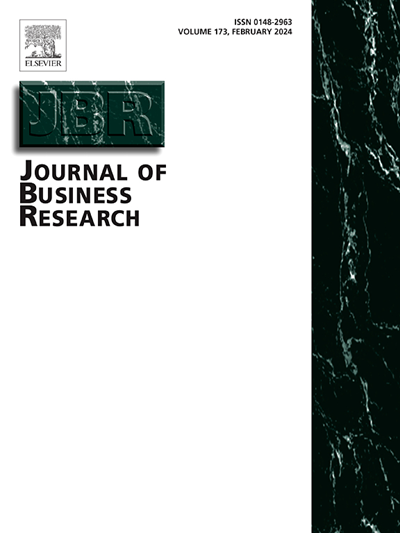聊天机器人的语言翻译效应:来自移动商务平台随机现场实验的证据
IF 9.8
1区 管理学
Q1 BUSINESS
引用次数: 0
摘要
本研究探讨了语言翻译创新对人工智能(AI)数字助理的影响。我们使用了来自印度移动电子商务平台应用程序的数据,该应用程序将其以前仅使用英语的聊天机器人引入了印地语和英语版本。这些数据是从对新用户进行的随机现场实验中获得的,通过量化语言翻译对用户指标(如购买和卸载)的影响,有助于确定在会话聊天机器人中引入语言翻译的影响。在实验中,该公司只是改变了互动的语言,从只使用英语变成了印地语和英语。该公司没有对应用程序中的设计或购买流程进行任何其他更改。我们发现,语言翻译创新显著增加了用户会话数量,也提高了用户的购买和参与度。用户粘性的增加并不是来自会话数量的增加,而是来自双语应用中会话内互动的增加。我们还观察到,接收双语应用的用户卸载量急剧上升。我们发现,在双语聊天机器人中,在高参与度的产品类别中,卸载量随着用户交互的增加而增加。总而言之,现场实验的结果表明,虽然人工智能助手的语言翻译导致了更多的购买,但它也可能导致更多的卸载。这一结果表明,孤立地实施类似的语言翻译创新,而不对应用经验进行任何修改,可能会给公司带来负面结果。本文章由计算机程序翻译,如有差异,请以英文原文为准。
Language translation effects in Chatbots: Evidence from a randomized field experiment on a mobile commerce platform
This study investigates the impact of language translation innovations in artificial intelligence (AI) digital assistants. We use data from a mobile com- merce platform application in India that introduced a Hindi and English version of its previously English-only language chatbot. The data, obtained from a randomized field experiment conducted on new users, help determine the impact of introducing language translation in conversational chatbots by quantifying its effect on user metrics such as purchases and uninstalls. In the experiment, the firm only altered the language of interaction, from English- only to Hindi and English. The firm did not make any other changes in the design or purchase flow within the application. We find that language trans- lation innovations significantly increase the number of user sessions and also improve user purchases and engagement. The increase in the engagement did not emerge from an increase in the number of sessions but from an increase in interactions within a session in the bilingual app. We also observe a sharp rise in uninstalls for the population that received the bilingual app. We find that in the bilingual chatbot, uninstalls rise with increased user interactions in a high involvement product category. In sum, the results from the field experiment show that while language translation in artificially intelligent as- sistants leads to greater purchases, it could also lead to increased uninstalls. This result suggests that implementing similar language translation innova- tions in isolation, without any modifications to in-application experience, has the potential to yield negative outcomes for the firm.
求助全文
通过发布文献求助,成功后即可免费获取论文全文。
去求助
来源期刊

Journal of Business Research
BUSINESS-
CiteScore
20.30
自引率
10.60%
发文量
956
期刊介绍:
The Journal of Business Research aims to publish research that is rigorous, relevant, and potentially impactful. It examines a wide variety of business decision contexts, processes, and activities, developing insights that are meaningful for theory, practice, and/or society at large. The research is intended to generate meaningful debates in academia and practice, that are thought provoking and have the potential to make a difference to conceptual thinking and/or practice. The Journal is published for a broad range of stakeholders, including scholars, researchers, executives, and policy makers. It aids the application of its research to practical situations and theoretical findings to the reality of the business world as well as to society. The Journal is abstracted and indexed in several databases, including Social Sciences Citation Index, ANBAR, Current Contents, Management Contents, Management Literature in Brief, PsycINFO, Information Service, RePEc, Academic Journal Guide, ABI/Inform, INSPEC, etc.
 求助内容:
求助内容: 应助结果提醒方式:
应助结果提醒方式:


